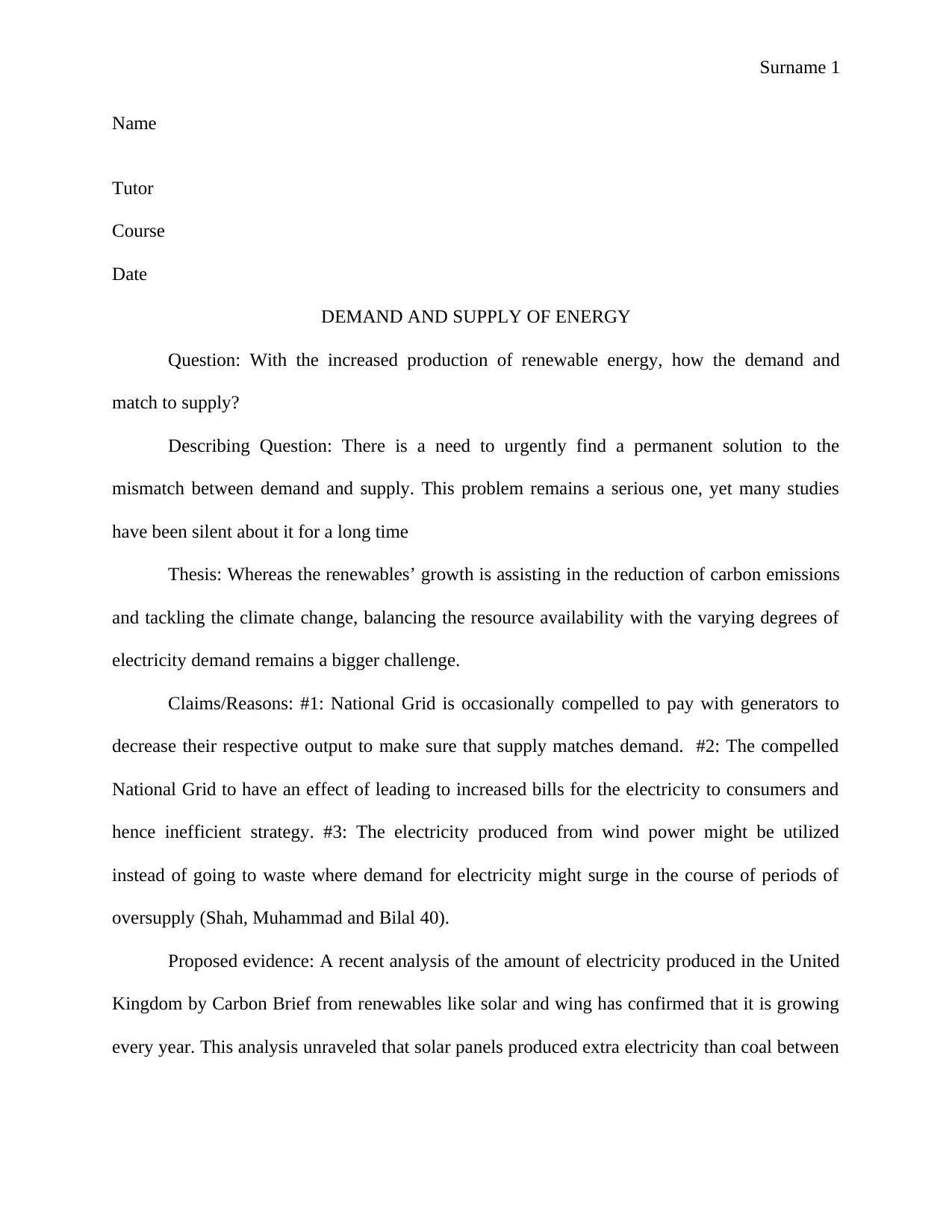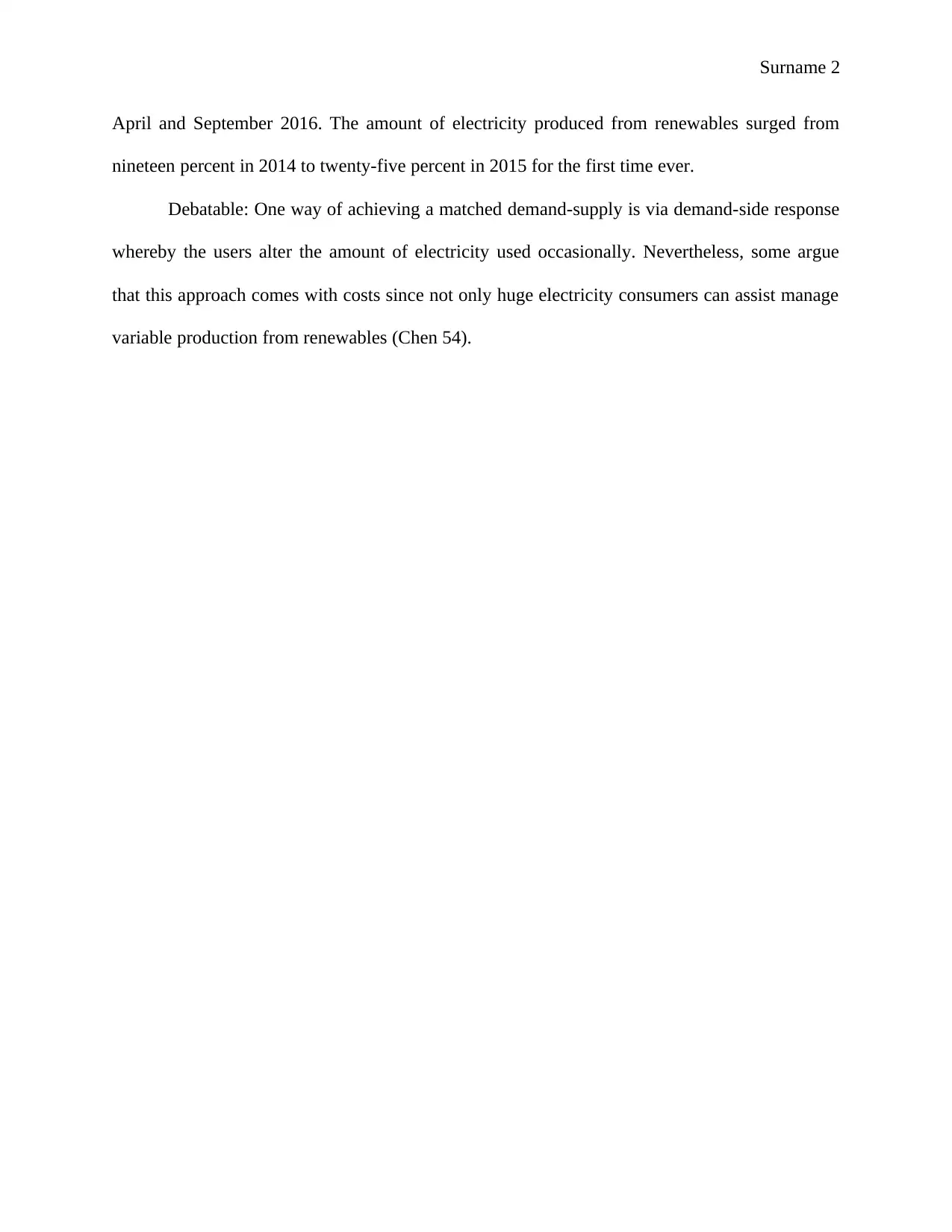Energy Demand and Supply Report: Analyzing Renewables and their Impact
VerifiedAdded on 2021/04/16
|3
|408
|318
Report
AI Summary
This report delves into the critical issue of energy demand and supply, particularly in the context of increasing renewable energy sources. It examines the challenges of balancing supply and demand, such as the need for the National Grid to manage fluctuating power generation from renewables like solar and wind. The report highlights the costs associated with these challenges, including increased electricity bills and the potential for wasted energy. It also explores potential solutions, such as demand-side response, while acknowledging the limitations of such approaches. The analysis draws on recent data and research, including an examination of electricity production in the United Kingdom, to provide a comprehensive overview of the complexities and potential solutions in the energy sector.
1 out of 3










![[object Object]](/_next/static/media/star-bottom.7253800d.svg)